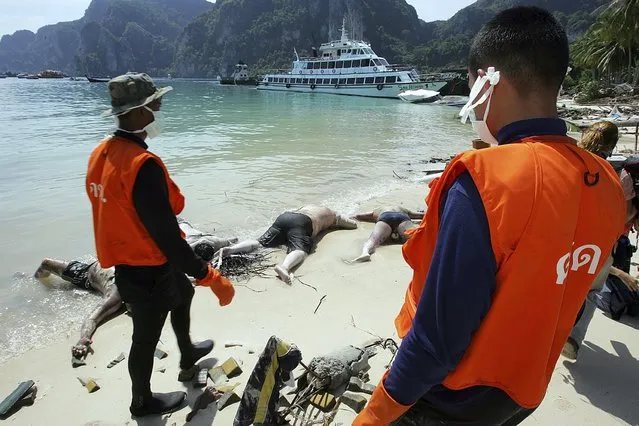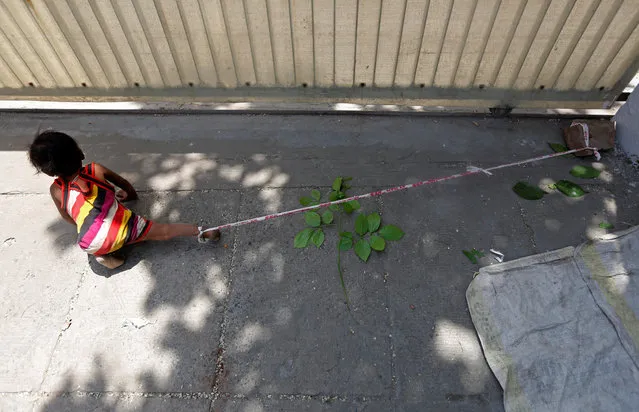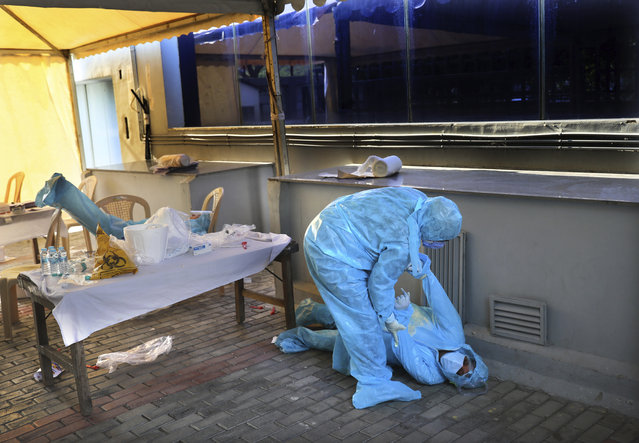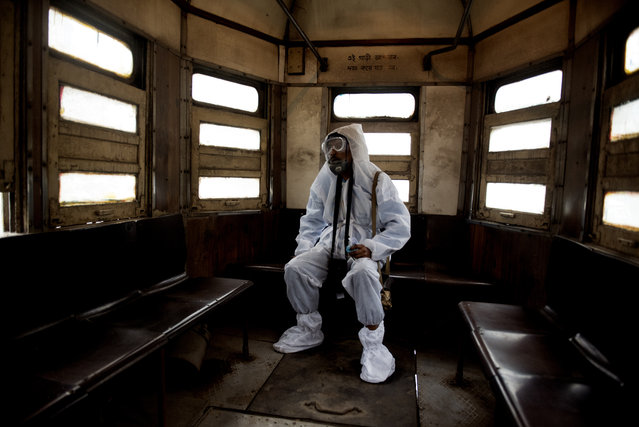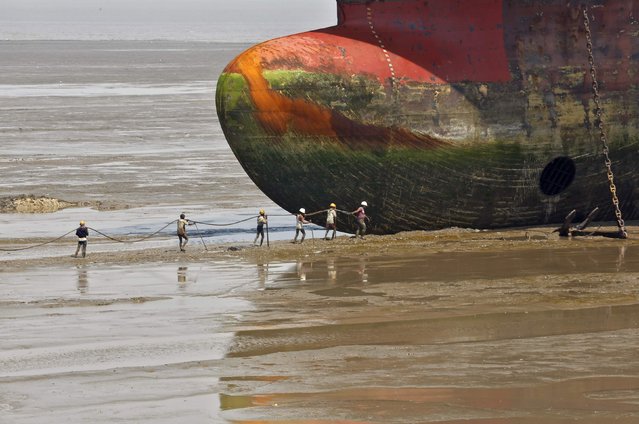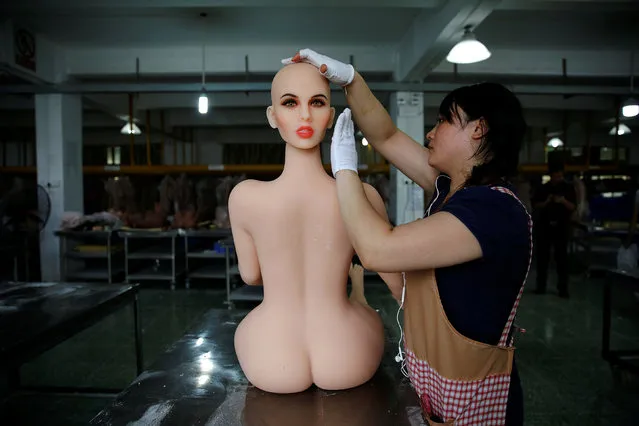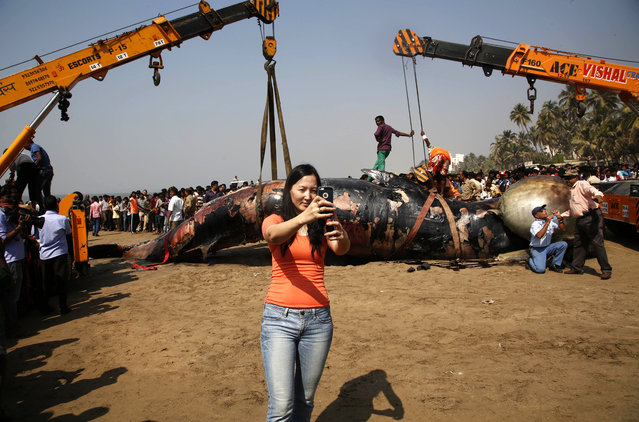
A woman takes selfie as municipal workers use cranes to lift carcass of Bryde whale at the Juhu beach, in Mumbai, India, Friday, January 29, 2016. Marine biologists in India were conducting an autopsy on the carcass of 35-foot long Bryde whale that washed ashore on a popular beach in the western city of Mumbai. The beached mammal which appeared to have died at sea two or three days ago was spotted on the beach Thursday by late evening walkers, who informed police. (Photo by Rajanish Kakade/AP Photo)
13 Feb 2016 09:33:00,post received
0 comments

